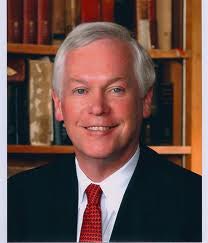
The principal one is that American colleges and universities must look more like the rest of America if they are to remain relevant in the 21st century. Once federal and state governments adopted the principle of increasing access through programs like the GI Bill, direct state subsidies, the Pell Grant and various federal loan programs, there was no turning back.
It’s been good for America as the nation continues its chaotic march toward broader equality for its citizens. Further, the linking of access to diversity more directly reflects the changing demographics of American society, the need to retrain in a postindustrial economy with a strong manufacturing component and a growing service sector. Fundamentally, it affects America’s ability to compete in a global economy.
The proof is in the execution. And that’s where American colleges and universities have a role to play and much still to learn.
A variety of factors influence the ability of colleges and universities to make their students, faculty and staff more diverse. For example, changing federal guidelines and judicial interpretations can dampen innovative and creative approaches to build diversity across a campus. Many college communities reasonably ask if it is worth the effort to initiate programs likely subject to court challenge.
In addition, diversity means something different on almost every college campus. Recruiting varies by the type and location of the college. Some colleges surprisingly are bad recruiters, even though they are tuition dependent. Further, administrators must think about federal, state and consumer pressures to increase retention and graduation rates and how these pressures address their diversity admission goals.
There are even more roadblocks. Diversity costs money. With discount rates approaching 50 percent nationally, net tuition revenue steady or in decline, and more than half of America’s colleges failing to meet their internal admission targets, the compelling counter argument is that there is no money available for major diversity initiatives.
The wealthier schools have more options. They can fund — effectively “buy” — diversity if they are rich enough. Or, the college can buy pieces of diversity — supporting articulation agreements with two-year institutions, targeting diversity initiatives within programs, like engineering, popular in corporate America, or funding wonderful niche programs that support diversity goals like Posse.
These programs are important first steps, but they only operate at the fringe of broader strategic goals to create a genuinely diverse campus. What, then, can American higher education do to become more aggressive in promoting diversity initiatives?
First, higher education must recognize that it has a “front burner” problem, particularly before some combination of demographic shifts, campus inertia, “credentialing” and financial pressures force a retreat from the current levels of commitment. America must maintain a broad, decentralized higher education system based on access and choice. But it cannot afford to stumble thereby creating narrow pathways — two-year, online and mission-oriented solutions — that effectively segregate minority students by pathway.
Second, we must redefine the definition of diversity more broadly. Diversity is a complex term that has nuance and subtext; nevertheless, the commitment must not waver even if the practical solutions differ for individual students by preparation and need.
Third, the federal and state governments must not apply a bureaucratic Band-Aid as a well-intended effort to improve diversity. Focusing government efforts on simplifying credit hours and transfer practices in cumbersome “one-size-fits-all” articulation agreements are an outstanding example of “governance by committee,” making sure the paperwork is in place even if the mechanism is often ineffective. A better policy is to begin by focusing on the students, rather than the institutions that serve them. What do students need to succeed, even if it means saving one soul at a time?
Fourth, American colleges and universities must use their tools to build diversity — especially financial aid — in a more focused and creative way. Too many higher education institutions use financial aid as a way to fill their freshman class rather than meet their mission and strategic goals.
Financial aid is an offensive weapon where every discounted dollar counts. Effective student service counseling must support better recruiting, including a broader conversion from time-worn admission strategies to creative new ed tech partnerships that match students to program and mission. It’s time to use financial aid dollars more intelligently and comprehensively.
And finally, corporate America must see beyond its immediate needs. Global business leaders must not choose sides among types of educational approaches and de-invest when a strong American higher education system requires the opposite. Workforce preparation is not a point-in-time reaction to changing employment patterns. It is a systemic, broad-based effort that has different meaning for each worker. The guiding principle must be to do no harm when choosing how best to prepare a workforce.
Most of us working in higher education agree that the sands are shifting beneath established educational practices. The question is whether we see opportunity not by imposing bureaucratic solutions, abandoning what works or choosing sides. In the end, America must ask how it can bring together the people, programs, strategies and protocol to “disrupt” prudently to better educate a diverse and unpredictable world.
Dr. Brian C. Mitchell is president of Brian Mitchell Associates and a director of the Edvance Foundation. He is the retired president of Bucknell University and former president of Washington & Jefferson College.



















